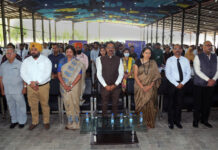Content of The Article
- Introduction
- How It Started And The Role Of Social Media!
- Crowdfunding For More Than A Lakh Rupees!
- Starting The Journey For Leh Ladakh!
- Experiencing The Ladakhi Culture In Its Villages!
- The Incredible Team Members!
- The Village Which We Were Waiting For!
- The Day of Electrification and Celebration!
- Praying @14,000 Ft. and Good Bye!
- Tourism At Best Tourist Place In India!
- Learnings For Life!
- Ladakh Through Lenses!
Introduction
More than 1.2 billion people in the world don’t have access to electricity and India is home to more than 300 million people who live in dark and most of them are from rural areas. Electricity is not only required to light up homes but also brings, many dreams with it and this is the reason why satisfying the minimum energy needs contributes the strongest in the Human Development Index (HDI).
I don’t know how to start, but yes, finally we did it.
Lots of experiences, lots of learning, some eureka moments and some challenging moments which encourage you to become a better person and I will be sharing this all with all of you.
What we did was very simple, but it has the potential to transform the lives of 60 people. The wait for change was very long, after 70 years of Independence, finally, they saw the 1st light bulb lighting their homes.
I, Hitesh Mahawar will take you on the journey of electrifying a village called Chalak situated in Markha valley of Ladakh @ 13,500 feet surrounded by the Himalayas.
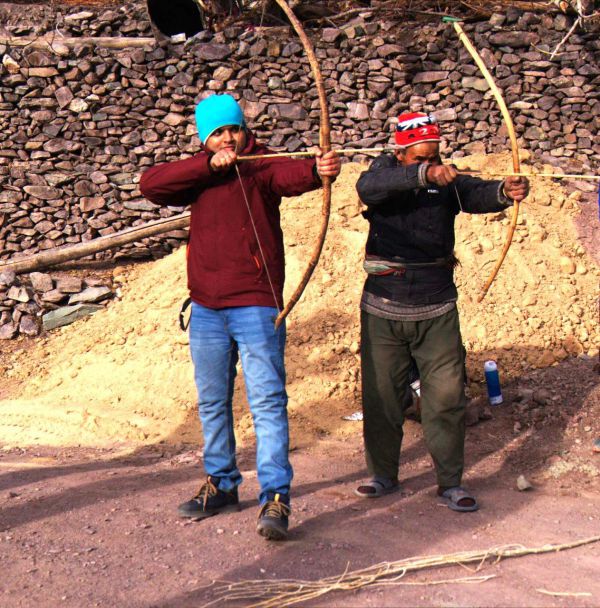
Practising Archery at Tsogsty Village, Ladakh (Credit: AS)
How It Started And The Role Of Social Media!
It all started in November 2017 when I was scrolling through my facebook wall and I saw an article on “The Logical Indian” page. The article title was “This Team Treks Hundreds Of Km In Himalayas To Electrify Villages That Are Not Even On Google Maps”, don’t you think the heading was attractive so did I. The heading itself captured my imagination and I read the whole article. The article was very well articulated and explained the work which Global Himalayan Expedition (GHE: a social enterprise) was doing since last 4 years.
GHE was in the mission to electrify all remote villages of Ladakh. What I found more interesting is the innovative way that GHE was following to electrify these villages. As the name suggests it organizes expeditions and invite applicants all across the globe to participate and install the solar grid on their own. It collects funds from the participant for the initial cost of the solar grid and to maintain it in the future. After reading the article the 1st thing which I did was I browsed the GHE website and register myself for next expedition. I was selected after 2 rounds of screening and interview. I wanted to know more about this organization and the whole process of electrification. Then I saw some documentaries made by NDTV and Nat Geo on 2 different village electrification expedition. I got to know that most of the team members for those expeditions were of different nationalities ranging from the USA to countries from Europe and people were of all age groups and professions, some were students, some doctor, researchers, entrepreneur and some employees of MNCs.
Crowdfunding For More Than A Lakh Rupees!
I was selected for the Chalak village electrification expedition on 20th January 2018 and the expedition was from 17th March to 26th March 2018. Why I am telling this is because for the expedition I had to arrange around 1.4 Lakh rupees (expedition cost Rs. 75,000 (with taxes) Travel to and from Leh: Rs. 18,000 – 20,000, Trekking gear: Rs. 20,000 – 25,000 and other accessories) and I had only one and half month. I am a student and also not from a wealthy family and the amount was very big for me. I assumed that I could not able to make it, but then I got to know about crowdfunding and thanks to GHE who shared some previous example of how people successfully manage to raise money for their expedition. I took the plunge and started off with my online crowdfunding campaign.
I only heard the word crowdfunding before and didn’t know how it works. I had very little time and had to achieve my target of raising Rs. 1.4 lakhs which were very ambitious and seems to be unachievable for me. But this whole exercise of running a campaign for funding my expedition for village electrification changes many things within me and given me experiences which I never imagined. I started sharing my posts on social media. I used every possible medium to share this funding campaign, facebook, twitter, WhatsApp, google plus and what not. I approached my friends whom I haven’t talked to in last 4 years, I contacted professors, NGOs and published posters and written blogs on online forums like Youth Ki Awaz. It was time-consuming, but fun at the same time. The number of shares of my post on facebook in one and half month about the campaign was more than the post I shared in last 8 years and I messaged almost everyone in my friend list, I sent messages in the Whatsapp groups and personal Whatsapp messages to all in the contact list. I contacted the department and hostel representatives at my Institute and requested to send a bulk mail to all the students at IIT Bombay.
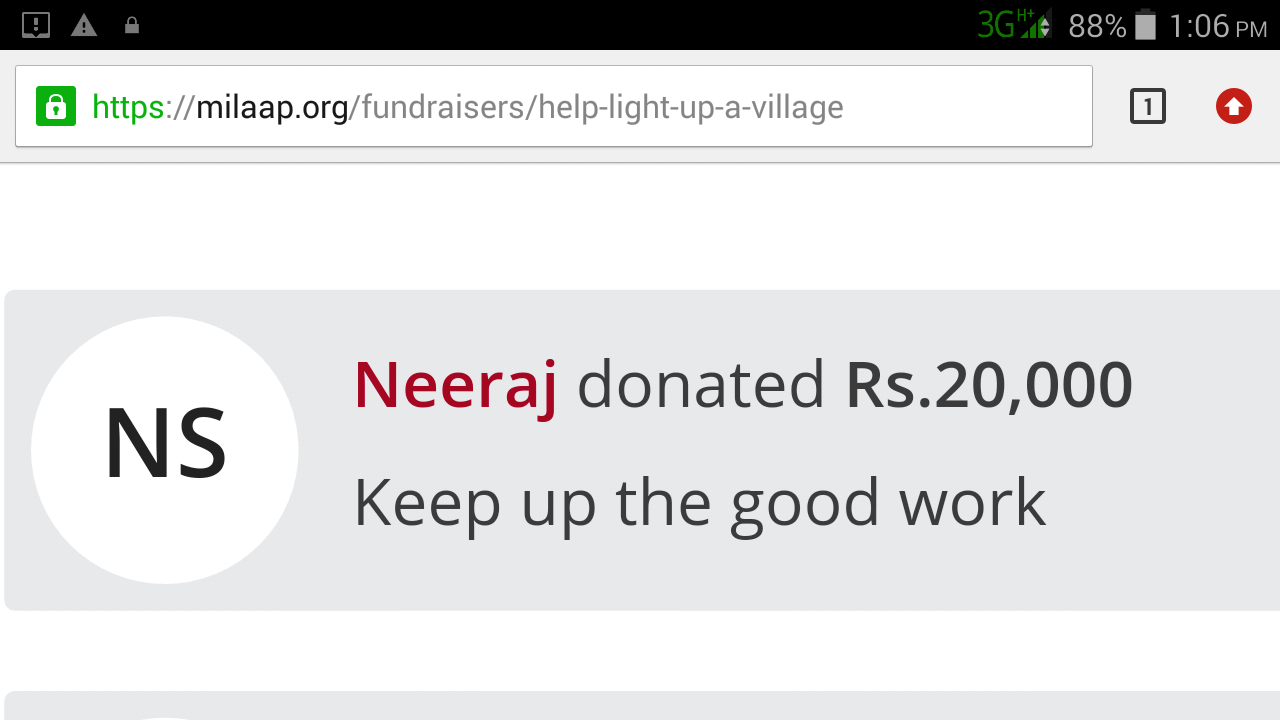
In the whole fundraising process, people amazed me with their generosity and their belief in doing something good for the society. My campaign started getting traction and my friends started donating and sharing the campaign on the social media platforms. I started receiving the donation from many anonymous people and friends. The amount was ranging from Rs. 100 to Rs. 20,000. I was amazed when one day an unknown person called me and asked about the campaign and assured me donating to my campaign and after a couple of days, I got a mail that my campaign received an amount of Rs. 20,000. This was the biggest donation received by my campaign from an individual. It was unimaginable for me and moved me from within. This incidence reinstates my faith in the humanity and encouraged me to continue my quest with double the vigor because now I had the responsibility to fulfill the aspirations of the donors as well. My department CTARA IIT Bombay helped me in a very big way financially and encouraged me to go and complete the expedition successfully. The day before my journey to Leh, I was able to achieve 95% of my fundraising target through the online and offline medium. Thanks would not be enough for all the donors and supporters of this campaign and I salute all of them for their time and money invested in this noble cause.
Starting The Journey For Leh Ladakh!
I booked my flight tickets to Leh. It was the 1st time I was booking the flight tickets and it made me feel somewhat special as this could be my 1st air travel. I started my journey on the eve of 16th March 2018 from Mumbai and reached Leh on 17th March 2018 around 8:15 am and it was a bright sunny day with a freezing temp., touching to 0-degree Celsius.
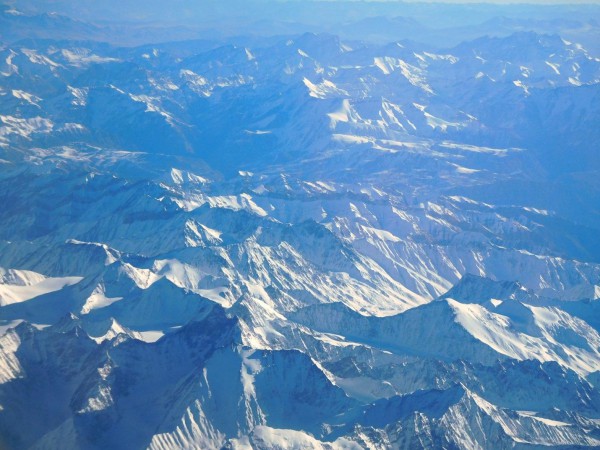
As soon as I landed to Leh, I was advised by the team leader from GHE, not to exert, take full rest and drink a lot of water to acclimatize to the climate as I was now @ 11,000 feet and the per breathe oxygen level was 40% less than the normal range. We headed towards the hotel and I met all my team members came from various parts of the country and some from a foreign land. We were the team of 10 members consisting 6 participants and 4 supporting members (team leader, guide, cameraperson, and electrician) from GHE.
Experiencing The Ladakhi Culture In Its Villages!
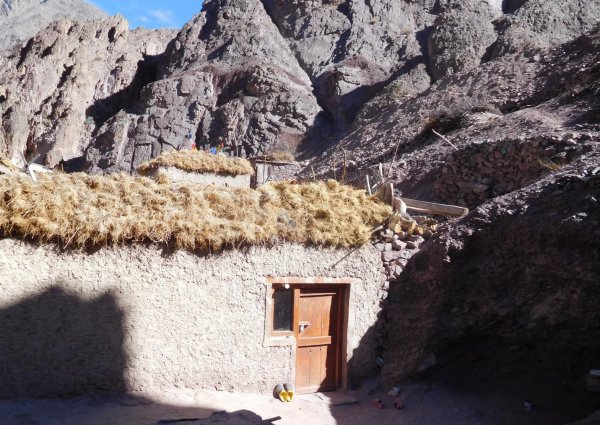
We started our 2nd day of the journey and before reaching to our 1st destination village, we visited Pathar Sahib Gurudwara (a Sikh temple) run by the Indian Army. We prayed to Gurunanak Sahib Ji for successful electrification of the village and relished the Prasad and began the long but exciting journey. We reached a village called Tsogsty by a vehicle after 2 hours of traveling and had a Ladakhi lunch followed by some hands-on with Archery and also visited the local copper artisans. We stayed that night at the homestays in the village. Next day, in the morning I had my 1st dry toilet experience and that was challenging as there was no water to use and outside temperature was in negative. After a pleasant morning, we had Khambhir (ladakhi bread made up of wheat) as our breakfast and then moved to reach our next destination which was village Skyu.
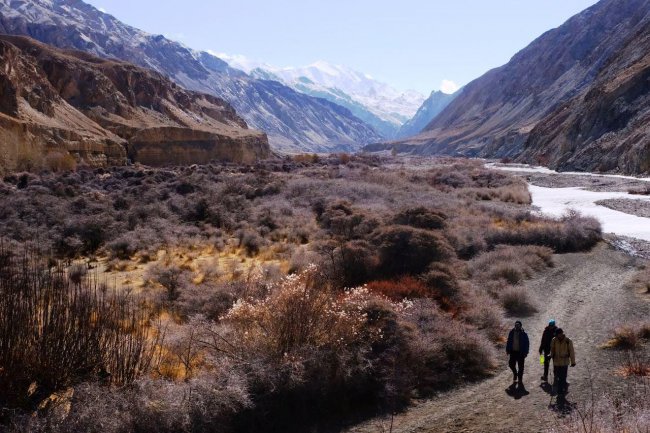
After a couple of hours drive from Tsogsty village, we reached the end of the road and from that point onward we have to cross the Zanskar River by a cable trolley to reach the other side and start our trekking to the village Skyu. The trolley was the only mode to transport the people and essentials goods from one side to another. We crossed the 30 meters wide Zanskar River from 10-meter height and enjoyed the scenic view of the lifeline of the Markha valley the Zanskar River. We started our trek after crossing the river and reached the Skyu village after 3 hours of trek, but we haven’t realized the time and it got passed easily as we were sharing and listening to the interesting stories related to each other lives. While trekking, I was stuck and lost in the captivating and breath-taking views of nature and our rock solid Himalayas.
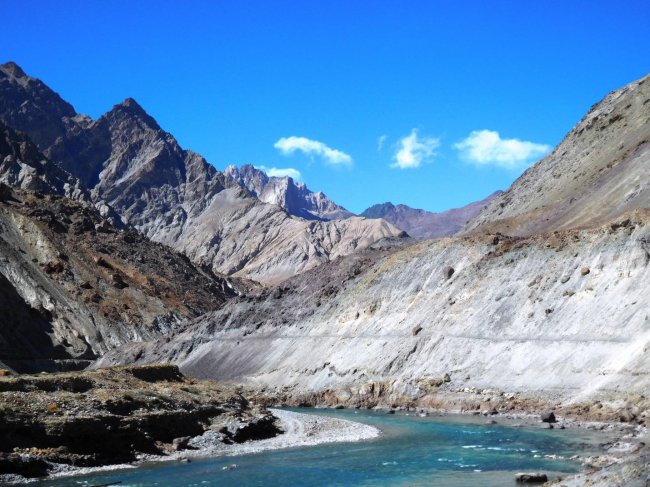
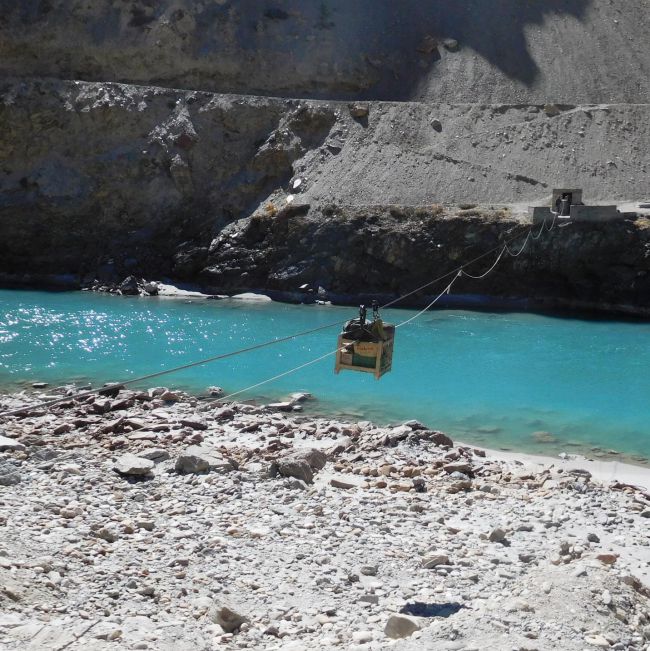
The Incredible Team Members!
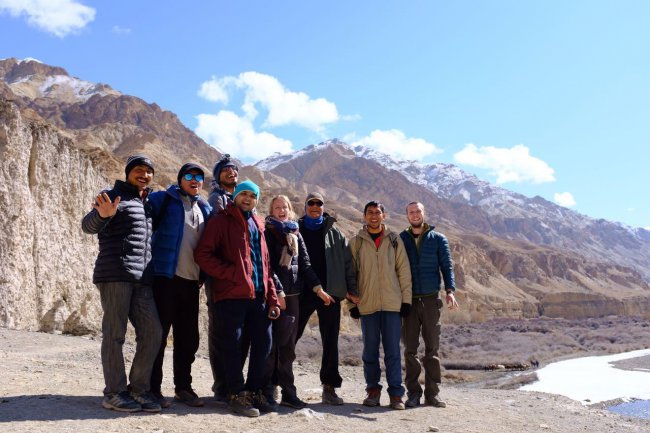
It was 3rd day of our visit and we were just one step away from our destination village Chalak. Every day at night we were listening to the brief life story of one of the team member and by now we are like one small family. Avinash, Romi, Yash, Edward, Bella, Stanzin (GHE member and camera person), Gaganpreet (GHE member and team leader), Shakir (GHE member and electrician). Each of them was unique in their own sense. We had an astronomer with Ph.D., entrepreneur, consultant, fashion designer, engineer and a robot lover in our team, coming from various part of the country and abroad. I learned many things from my team members. I learned that one could be fit even at the age of 50 and trek for hours and beat the notion of getting old. I learned that your zeal to explore the world and people could land you to an opportunity to change the status quo and bring positive change in others life. I learned that astronomy could also be taught in a playful manner to children. I learned that having an open mind receptive to new and diverse ideas could take us to amazing places and could change your way of thinking. I learned that a person from a small village could chase his dream and establish his own media company. I learned that a person from weak financial background could become an engineer at Microsoft. Last but not least, I learned that a person without a formal degree could know more than an educated person and age is not the barrier to learn anything and everything.
The Village Which We Were Waiting For!
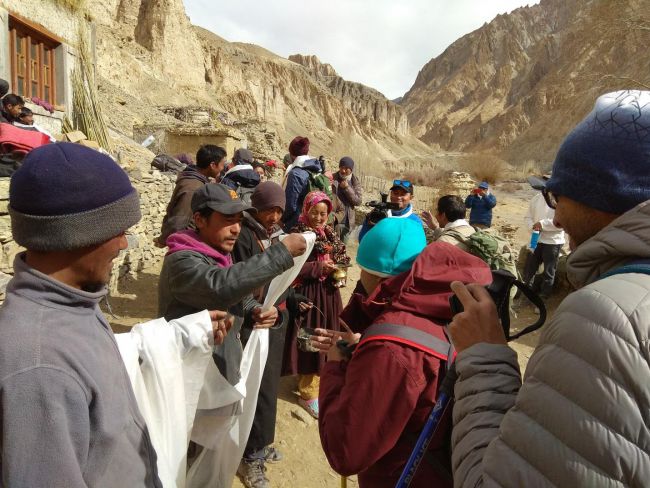
This was the 4th day of our journey and today we had to reach Chalak village (the village to electrify). We started early and began our journey to reach Chalak. It was 6-hour trek and we passed by a couple of villages and frozen streams. The excitement to reach the village was increasing as we come closer to the village and finally, the wait of 4 days was got over and we reached the village. The villagers were waiting and welcomed us with the traditional ceremonial white Ladakhi silk scarf “Khatak (Khata)”. I was honored to receive such a welcome by the villagers and felt special. The village was located @13,500 feet above sea level and the surrounding was mesmerizing. The village was surrounded by mountains and a spring was passing through the village which was the only source of water for all the purposes. The village has 11 households spread into three clusters of 5, 4 and 2 houses. All houses were kaccha houses and made up of soil, sand and local brick. Each household rearing animals like sheep, cows, donkeys, and horses. The population of the village was around 60 and people do guide work, trip advisor, labor at Leh to earn money and homestays at village also enabled them to earn some more. Wheat and barley was the main crop and villagers were farming once in a year along with some vegetable cultivation.
After reaching the village, we started off with the household survey after a little rest and having tea and snacks. Our team were divided into two and asked to cover the whole village. We visited every household and asking about the number of bulbs they would need and where they want to install it. We counted the total number of bulb required for each house and marked the place where the bulb supposed to be installed after consultation with the household owner.
We were amazed not to see any kid in the village and after some inquiry, we got to know that kids are living and study in the nearby village as they don’t have electricity here and only come to the village on some occasions. This news made me sad and happy at the same time. I was sad to see that the small kids have to live away from their home and family at this very small age because of no access to electricity and were happy as they are expected to come next day to see their village electrified.
The Day of Electrification and Celebration!
It was the 5th day of our expedition and this day was special for all of us. Today was going to be the historic day for the villagers and they waited for this day for very long. The team was briefed about the installation process of the standalone solar grid. We had to install 40 W solar panel connected to a charge controller, a battery for storage and four to five 3 W LED bulb as per the household survey surveyed a day before. We started the wire and bulb fitting and panel installation and GHE electrician Shakker Acchu were doing all the connection from panel to charge controller and battery. The bulb holder fitting process was little difficult as we had to fit those inside the rooms and the roof of these households were old and made up of wood and some rooms were as short as 5 feet in height and the roofs were covered with the dust accumulated from decades and which was falling on our face when hit the hammer to fit the bulb holders, but the whole process was fun and made us able to appreciate the life of the villagers.
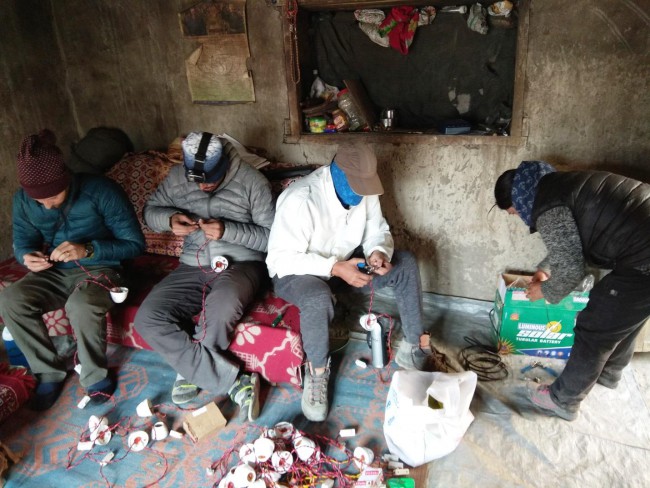
Now, the time had come to light up the village and end their darkness of the centuries. The whole team was gathered inside the 1st house of the village to be electrified after the sunset. The owners of the house were old and this was the 1st time when they would be seeing a bulb electrifying their house. We started with the Ladakhi prayer and chant a Lord Ganesha Mantra (Vakratunda Mahakaya Suryakoti Samaprabha Nirvighnam Kuru Me Deva Sarva-Kaaryeshu Sarvada) for successful and hassle-free electrification of the village. And then the moment has come when the bulb was switched-on and light of the bulb filled the whole room with joy and emotions. Everyone was enjoying and greeting each other after successful electrification. The lady owner of the house was in tears to see her home lighten up for the 1st time. I was experiencing this for the 1st time and moved with the incidence. Everybody present there was experiencing a complex soup of emotions. Sometimes people like me, living in affluent regions of our country, take such things for granted and do not value the facilities provided to us, but when you interact and visit people who are deprived of basic facilities and when you become a change agent which facilitates people realizing their potential and expanding their ambition than one realizes the potential of one light bulb and the changes which it could bring to the lives of people.
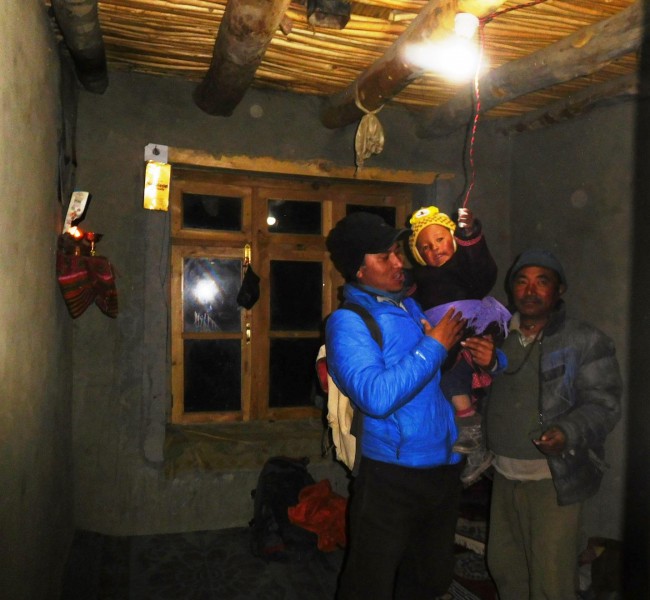

We electrify each household of the village one after another and the whole village were celebrating and dancing. The villagers organized a feast or gala dinner with some folk song and folk dance. We reached the pandal (tent) where this celebration was organized. We were again given the pure Khatak and thanked by the villagers. Now we got the stage to thank the villagers for their support and hospitality for the last couple of days and I got the opportunity to show my gratitude towards them. We never felt like that we are living in one of the harshest climatic conditions as we were always kept warm and given full care (more than required) by the villagers whether it is providing good food or warm water in the chilling morning. They were always ready and happy to help us on the whole journey. I thanked them and pray to god for good. After the Thanksgiving session, the villagers sang some folk song which was special to the occasion followed by a folk Ladakhi dance in traditional Ladakhi clothes. We enjoyed each and every moment of the celebration and also participated in the dance. In the end, we were served the delicious dinner and cake. I was so energized and happy about the fact that the village got the electricity and couldn’t felt to sleep. After all the celebration and dinner, we went back to our homestays and slept. This was my most relaxing sleep which I had during the expedition.
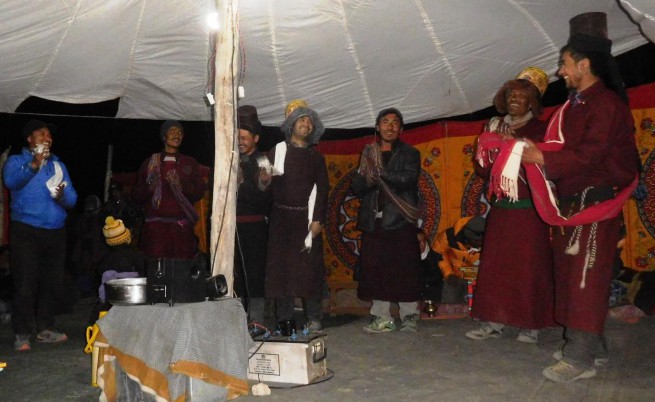
Praying @14,000 Ft. and Good Bye!

Today was the 6th day of our expedition and still had one and final trekking remaining for the Umlung Monastery @ 14,000 ft. We started and reached the Umlung Monastery the centuries-old Monastery and also the highest point of our trek. We got to see the old fascinating idol of Budha and learned the importance of this Monastery. I prayed to Lord Budha for the wellbeing of the society and to keep his blessing to all of us always. This Monastery was also electrified by the GHE sometimes ago. The final trek to reach the monastery was 50m long and very steep, but after reaching the summit point on the Monastery, the view was enthralling and splendid. We could see the ranges of mountains and the view of the frozen river was alluring. After spending some time at the Monastery, we started our final and back journey to reach where we came from.
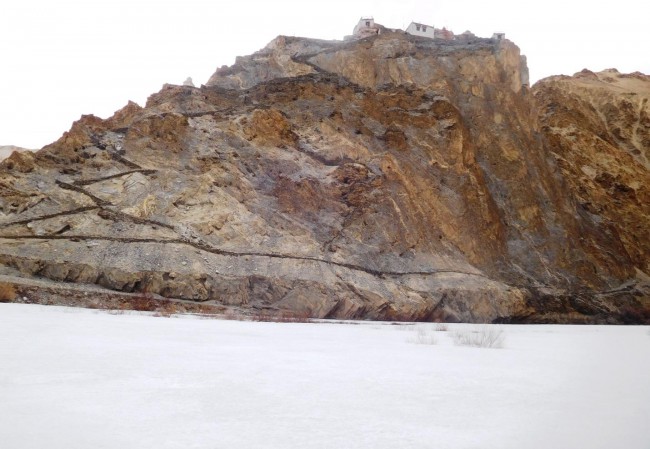
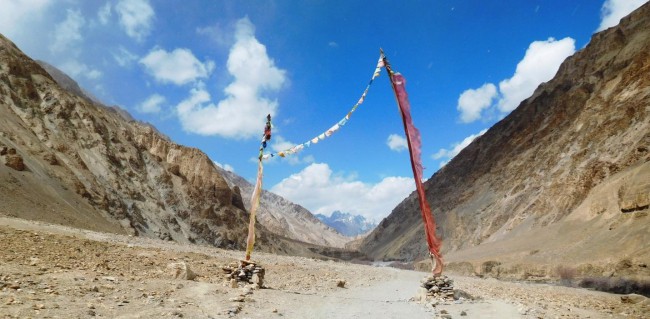
Tourism At Best Tourist Place In India!
On our way back, we visited the Sumda Chenmo Monastery constructed in the 11th century. We also visited Chilling and Skyu Monastery and saw the Museum at Chilling village where various copper artworks were displayed. We came back and on our way back to Leh we again visited the Pathar Sahib Gurudwara and had Langar (Lunch) and did some seva. Next day we visited all the tourist attraction Thiksey Monastery, Shey Palace, Spituk Monastery, War Memorial, Leh Market and Shanti Stupa. We bought some souvenir and typical woollen caps of Ladakh. In this way, we came to an end of our expedition.
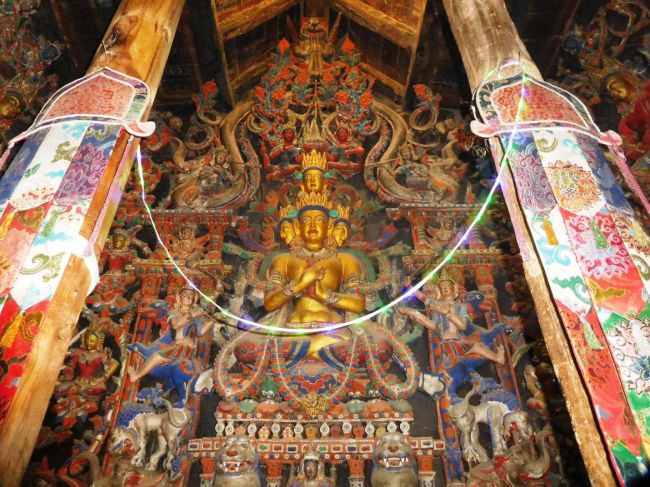
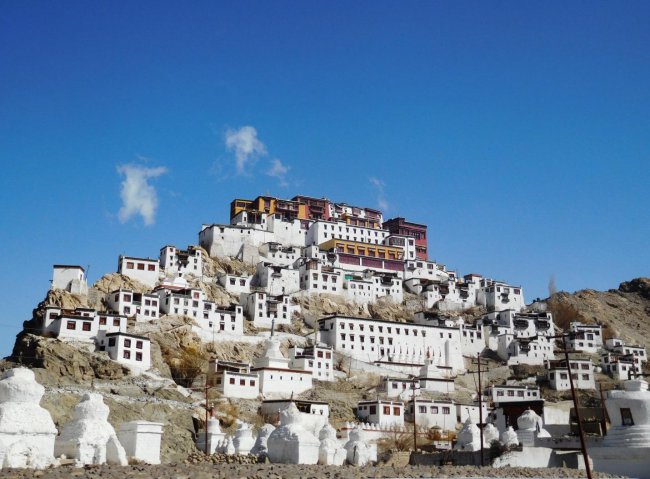
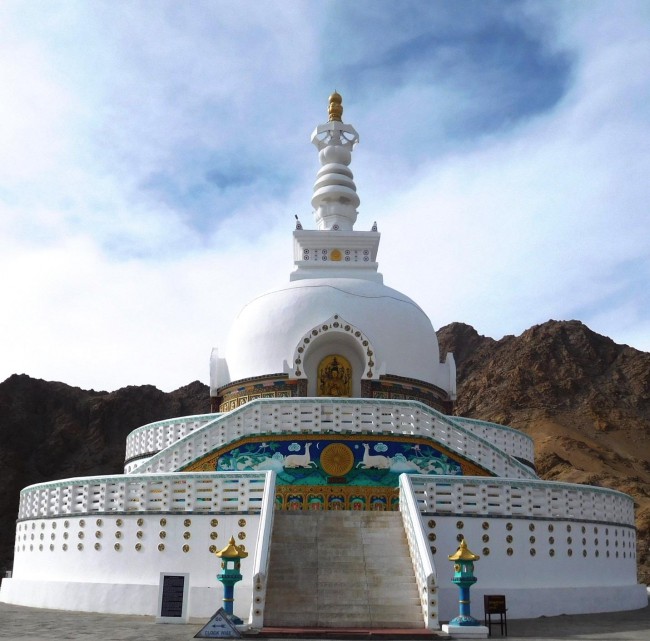
Learnings For Life!
Now, when I look back and try to contemplate what I learned from this event in my life, I got many amazing answers. The most important learning for me was to “challenge your assumptions” and “keep strong willpower”. It was my willpower who drove me to participate in this expedition and during the course of this whole episode, it broke many pre-assumptions and notions which could be the roadblock to my goal. I learned that if you have a strong belief in what you are doing and it is for the greater good for the society, no matter what, you will achieve your goal and surprise yourself with the abilities you have inside yourself.
The village got electricity and I got unforgettable experiences and learnings for a lifetime!
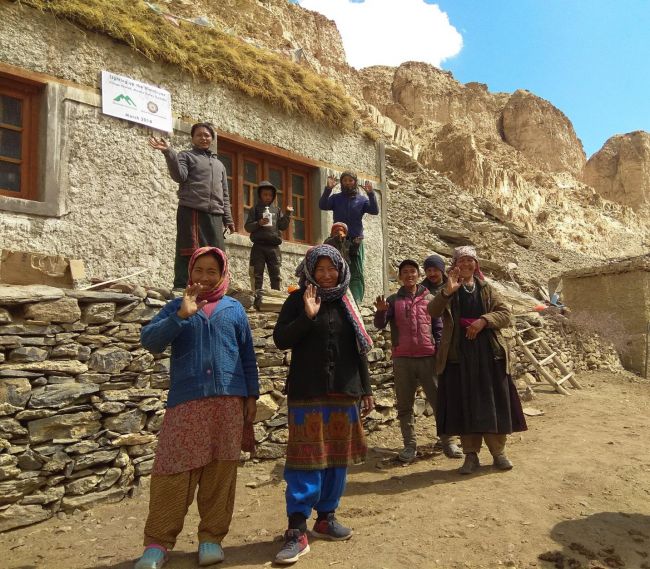
Julley! Thuk-Je-Che! Thank You! Dhanywaad!
Acknowledgement
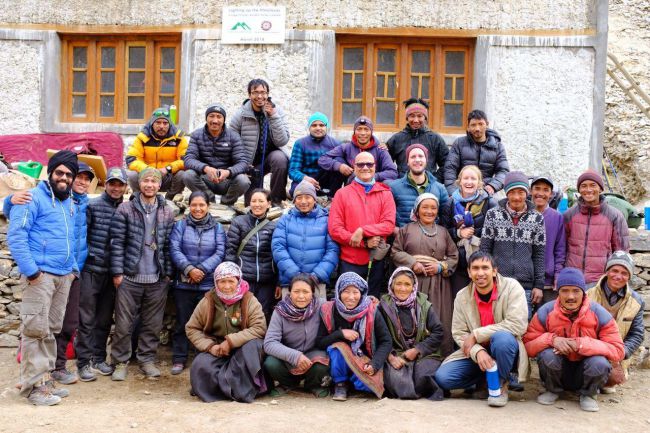
Team Global Himalayan Expedition and Mountain Homestay (Credit: Team MHE)
Thanks to all GHE members, Mr. Paras Loomba, Mr. Gaganpreet Singh, Mr. Stanzin Gurmet, Mr. Shakeer Husain, Mr. Thenlis for organizing this expedition.
Thanks to Mr. Mrigank Gupta, CTARA IIT Bombay for editing the story.
Credit; MHE: Mountain Homestay Expedition, GPS: Gaganpreet Singh, AS: Avinash Surendran, HKM: Hitesh Kumar Mahawar.
About the Author: Hitesh Kumar Mahawar is an LPU alumnus and currently an M.Tech. Student at Centre for Technology Alternatives for Rural Areas (CTARA), Indian Institute of Technology Bombay (IIT Bombay) and Project Research Assistant at Rural Technology Action Group (RuTAG), IIT Bombay, Email Id – hiteshmahawar93@gmail.com.
LinkedIn: https://in.linkedin.com/in/hitesh-kumar-mahawar-b6bab783
Do you have a story to share too? Share it here.





